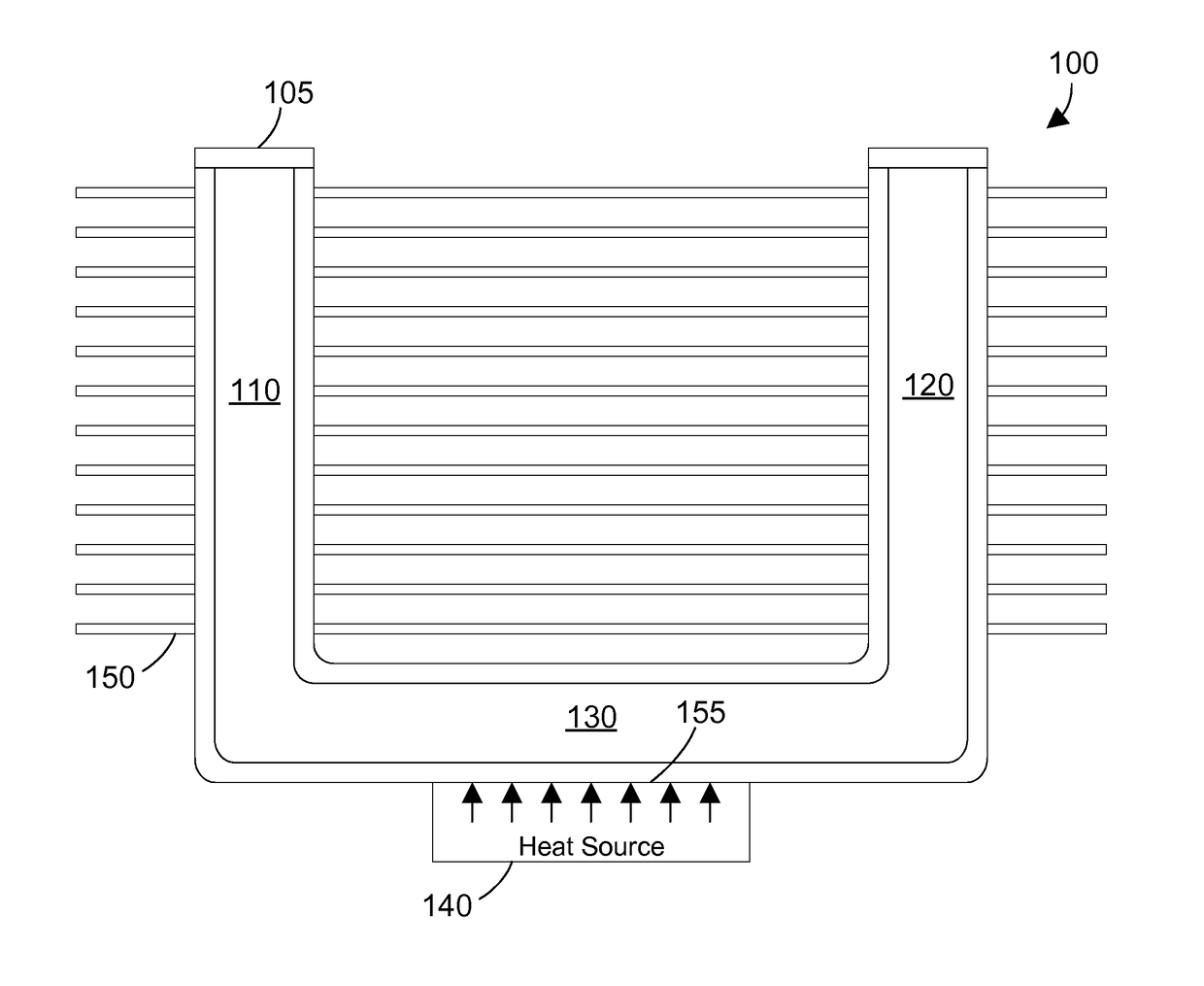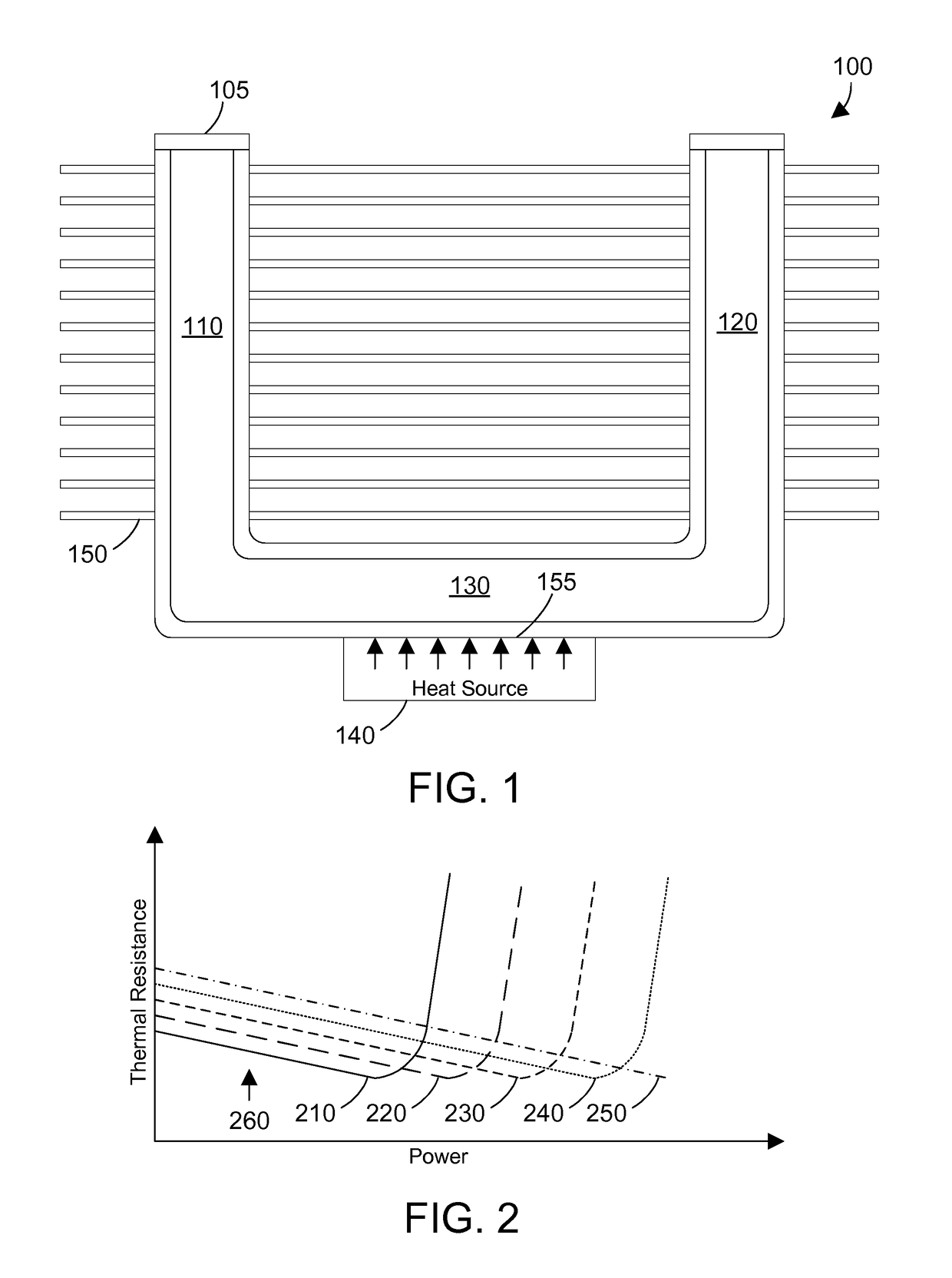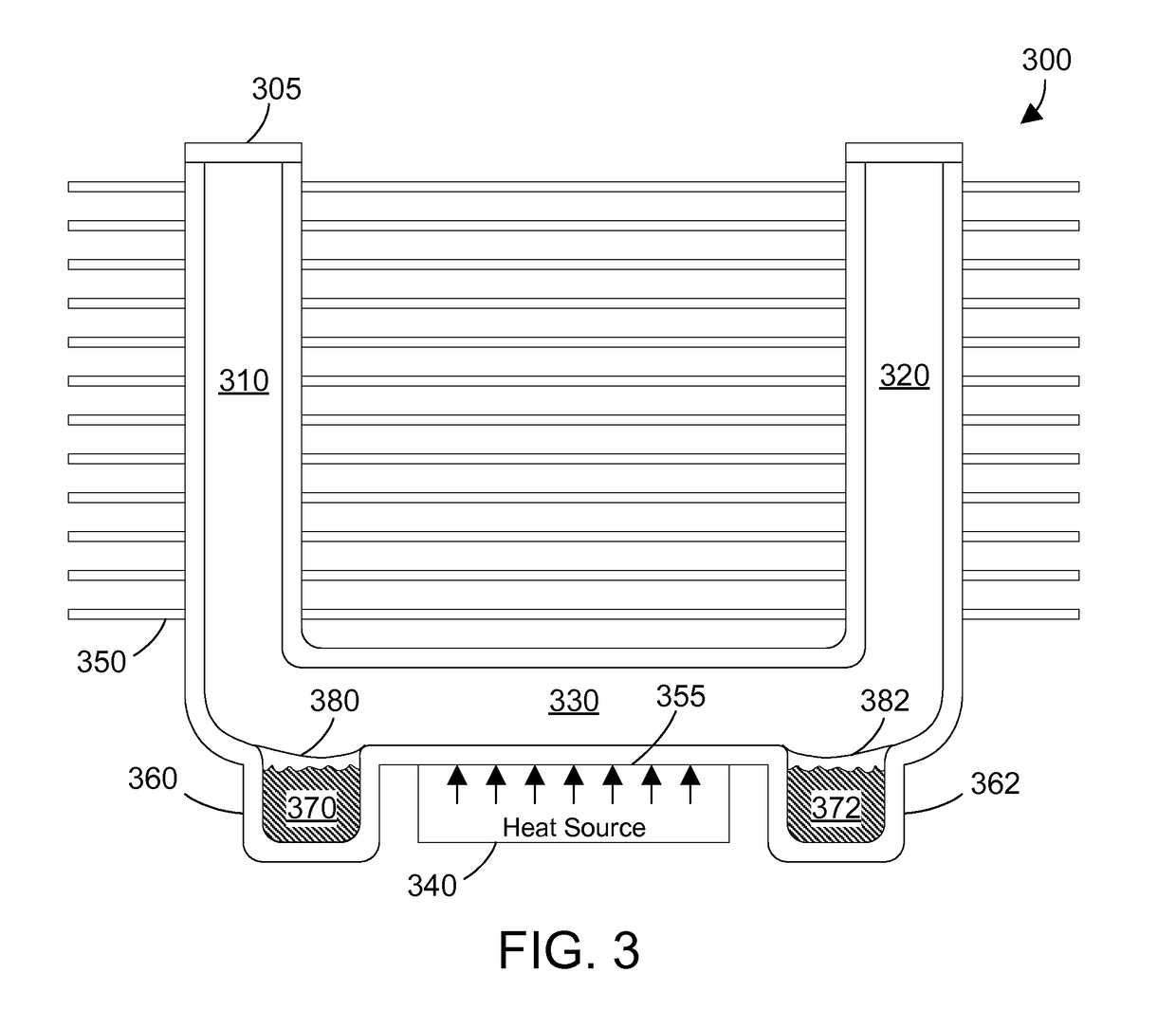Demand-based charging of a heat pipe
- Summary
- Abstract
- Description
- Claims
- Application Information
AI Technical Summary
Benefits of technology
Problems solved by technology
Method used
Image
Examples
Embodiment Construction
[0017]The disclosure and claims herein relate to a heat pipe that includes one or more reservoirs of liquid that are closed at lower temperatures and open at higher temperatures. The opening of the reservoirs at higher temperatures caused by higher power levels dynamically increases the amount of liquid in the heat pipe, which increases performance of the heat pipe at higher power levels. As the heat pipe cools, the liquid condenses and flows back into the reservoirs. As the heat pipe continues to cool, the reservoirs close. The result is a heat pipe that is more efficient at lower power levels and still maintains high efficiency at higher power levels due to the demand-based charging of the liquid based on temperature.
[0018]Referring to FIG. 1, a heat sink 100 is shown that includes a heat pipe 105 in a U-shape with vertical portions 110 and 120 coupled to a common horizontal portion 130. The horizontal portion 130 is charged with a first quantity of a liquid. The heat sink 100 inc...
PUM
 Login to View More
Login to View More Abstract
Description
Claims
Application Information
 Login to View More
Login to View More - R&D
- Intellectual Property
- Life Sciences
- Materials
- Tech Scout
- Unparalleled Data Quality
- Higher Quality Content
- 60% Fewer Hallucinations
Browse by: Latest US Patents, China's latest patents, Technical Efficacy Thesaurus, Application Domain, Technology Topic, Popular Technical Reports.
© 2025 PatSnap. All rights reserved.Legal|Privacy policy|Modern Slavery Act Transparency Statement|Sitemap|About US| Contact US: help@patsnap.com



